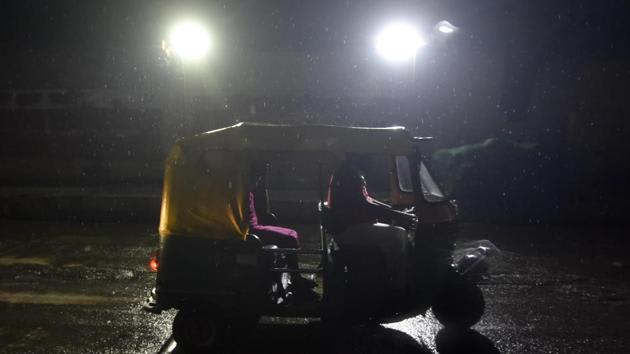
The south-west monsoon made an onset over Kerala on Monday morning, keeping its normal arrival date of June 1, with heavy to very heavy rains and strong southwesterly winds blowing many parts of the state.
The India Meteorological Department (IMD) forecast on Monday that the monsoon this year was likely to be "normal" at 102% of long period average (LPA) with a model error of (+/-) 4%
According to IMD's second long-range forecast update for the monsoon, north-west India is expected to receive excess monsoon rainfall at 107% of LPA; Central India is likely to get 103% of LPA, while south peninsula and north-east India area likely to receive 102% and 96% of LPA respectively with a model error of (+/-) 8%. The forecast added that there is a 41% probability of a "normal" monsoon, 25% probability of an "above normal" monsoon, and only 5% probability of deficient rains. In its first long-range forecast released in April, IMD predicted that monsoon rain will be 100% of LPA this year.
Normal is defined as 96 to 104% and above normal as 104 to 110% of LPA.
Monsoon rains are critical for farmers in India, where nearly half the people directly or indirectly depend on agriculture for a living. Around 60% of the country's net-sown area does not have any form of irrigation. Millions of farmers wait for the rains to begin the summer sowing of major crops such as rice, sugar, cotton, coarse cereals and oilseeds. Half of India's farm output comes from summer crops dependent on these rains.
"We are expecting very good rains this year. As you can see the forecast is skewed towards the positive side," said M Rajeevan, secretary, Union ministry of earth sciences.
According to global weather experts, El Nino Southern Oscillation (Enso) neutral conditions are prevailing over the equatorial Pacific, and neutral Indian Ocean Dipole (IOD) conditions are prevailing over the Indian Ocean. El Nino is a climate pattern characterised by high sea surface temperatures in the tropical Pacific Ocean. El Nino years in India are linked to below-normal monsoon rains and higher-than-normal heat waves. Last year, weak El Nino conditions prevailed, leading to the delayed onset of monsoon.
Global models are also indicating cool Enso conditions are likely to prevail this monsoon with some possibility of development of weak La Nina conditions, characterised by low sea surface temperatures across the east-central Equatorial Pacific in the later part of the monsoon season. "La Nina is good for the monsoon unlike El Nino. This is good news," said M Mohapatra, director general, IMD.
"We can't say anything this year because we haven't made a forecast. Conditions are favourable for a good monsoon because of Enso neutral conditions. In fact, personally I think there will be above normal rains," said Mahesh Palawat, vice president (climate and meteorology) at Skymet Weather, which couldn't release a forecast this year because of logisitical issues related to the national lockdown and because they are in the process of updating their models.
According to IMD's national weather forecasting centre, the monsoon has already advanced into all of the South Arabian Sea; Lakshadweep, most parts of Kerala and even some parts of Tamil Nadu. Kozhikode received 15cm rain from Sunday morning to Monday 8.30am, while Trivandrum and Kannur received 6cm rain each.
"Kerala received very good rains and monsoon is advancing well. The winds are south-westerly and westerly, very strong winds. There are convective clouds over south-east Arabian Sea. All parameters for monsoon onset are now met," said K Sathi Devi, head of the National Weather Forecasting Centre. He added that the monsoon winds were strengthened by the depression formed over south-east Arabian Sea, which is likely to develop into a cyclone on Tuesday.
More than 70% of the 14 rainfall monitoring stations used to declare the monsoon onset over Kerala have reported rainfall during last 48 hours. Westerly winds have strengthened in the lower levels (wind speed up to 20 knots) and deepened up to 4.5km over the south Arabian Sea, IMD said. IMD's onset guidelines include a clause that says 60% of 14 stations enlisted in Lakshadweep, Kerala and Coastal Karnataka should report rainfall of 2.5mm or more for two consecutive days.
The south-west monsoon normally sets in over Kerala around June 1. It advances northwards, usually in surges, and covers the entire country around July 15.
Sign on to read the HT ePaper epaper.hindustantimes.com